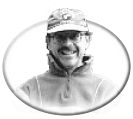|
|
|
List of BC Adventure Advertisers Site Info
Advertise With UsAwards About Us Contact Us  Kayak with Killer Whales Free Vacation Guides
BC Vacation GuidesCoastal Vacations Thompson Okanagan EcoTourism Fishing Vacations Guest Ranch Guide Romantic Getaways Wilderness Vacations Winter Vacations The Rockies Guide 
Coastal Spirits Expeditions Login |
Annual
Cycle of Runs Sportfishing concentrates on two local stocks of chinook salmon. The Kilbella and Chuckwalla chinook arrive in early June with catches peaking at the end of the month as the more numerous and larger Wannock River stock appears. The second flood of chinook occurs in later July with peak catches occurring in mid-August. The majority of later fish are destined for the Wannock River, the remainder spawning in the Neechanz River and Owikeno Lake tributaries. 1998 proved a record year with 2700 of these lumbering giants testing the adrenaline of lucky anglers. Large numbers of coho are angled each summer. Present from July to September, these larger-than-average fish often top 20 pounds and prevail in such numbers that 20 - 30 fish days are common in August. Feisty 4 - 7 pound pink salmon peak in numbers between July 7 - August 7. Destined for most local rivers, including the Kilbella, Chuckwalla, Wannock, spawners also nose into Moses Inlet and Johnson Creek. Chum salmon are caught infrequently as they angle toward Smith Inlet.
Lures
on an Annual Basis Halibut and bottomfish prefer a whole herring connected to a double sliding hook rig (up to 9/0 hooks) on a 6' leader to a 1 pound cannonball.
Hootchies: Not
commonly utilized.
Overall Strategy and Specific Fishing Areas The lower Inlet offers the best bottom fishing. Halibut are migratory animals that prefer deep, flattish rockpiles in open water. Lingcod lie in wait of meals on deep rocks exposed to strong tidal flow. A red snapper will spend its entire 25 year life hovering over one rock at depths of 200 - 250'. Accordingly, all species are more prevalent at the Inlet's mouth in Open Bight and in deeper channels between the small rocky islands west of Goose Bay. Fishing for big chinook and plentiful large coho is what Rivers Inlet is famous for. Lower Inlet salmon fishing concentrates near the Wall, Rouse Reef, Draney Narrows and Wadhams Point. The fish come through amazingly high in the water column. So 'wild' are the salmon that cutplugs are trolled - brace yourself - 10 - 15' from the rod tip. Imagine the adrenaline rush of watching a salmon larger than your leg take the lure beside the boat. Upper inlet hotspots are situated close to fishing boundaries where salmon ripen before ascending local rivers. South side hotspots include McPhee Bay, Rutherford Point, Whale Rock and The Slide. On the north side of the inlet lie Baker's Hole and the most popular spot, Marker 16. This is deep water so fish tight to the shore. A little further east, Route 66, named for a famous two hour battle with a 66 pound chinook, is the last spot the salmon will pass before heading up river. Be there to cut them off! |
 Follow Us On Facebook Articles Coastal BC FisheriesSeafood Recipes (Pt1) Seafood Recipes (Pt2) Seafood Recipes (Pt3) Seafood Recipes (Pt4) Hot Spots
BamfieldCampbell River Gold River Hakai Pass Langara Island Port Alberni Port Hardy Port Renfrew Prince Rupert Rivers Inlet Shearwater Tofino Victoria Waterfront Salmon Online
Chinook SalmonChinook of Juan de Fuca Chum Salmon Coho Salmon Contacting the Fish Guide Your Way To Success Happy Halibut Hunting Happy Halibut Hunting (Pt2) Happy Halibut Hunting (Pt3) Harvesting the Herring Likes the Lakes Pink Salmon Sockeye Salmon Steelhead Bobber Tip The Butts of Bamfield Trolling Tip for Sidney Techniques
Boat Electrical PotentialCasting for Your Catch Drift Fishing (Pt1) Drift Fishing (Pt2) Mooching for Salmon Tough Knots for Big Fish Trolling for Salmon (Pt1) Trolling for Salmon (Pt2) Trolling for Salmon (Pt3) Winter Fishing the Capital Writers:
Peter Caverhill Brian Chan Fred & Ann Curtis Ian Forbes Geoff Hobson Gordon Honey Steve Kaye Fred's Custom Tackle Ron Newman D. C. Reid Philip Rowley Barry Thornton |
||||||||||||||||
|
||||||||||||||||||

